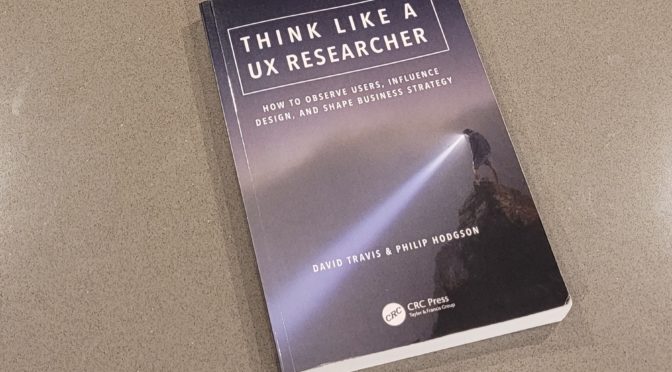A few months ago I got my hands on a copy of the book Think like a UX Researcher, written by David Travis and Philip Hodgson. The title may suggest that the book is for someone outside the user experience (UX) field who wants to start to think like a UX researcher. It indeed gives inspirations into the mindset needed to become a UX researcher, and is therefore useful for professionals in diverse related professions. However, the practical information, experiences and anecdotes shared by the two authors will be better enjoyed by those who are already accomplished UX professionals like researchers and designers, or at least have good knowledge of the field.
One characteristic of this book is that it doesn’t teach you in detail how to perform specific tasks to conduct your research, such as the interview techniques, how to design customer journey maps or how to create personas. For these and other practical techniques, you better consult other books like Observing the User Experience: A Practitioner’s Guide to User Research by Kuniavsky, M., Goodman, E., & Moed, A.
What this book does tell us is the more high-level, crucial tasks for the profession. From their tagline, we see that the book focus on how to observe users, influence design, and shape business strategy. For this very reason, I found this really useful and inspiring, with information, guidance and survival tips that we don’t usually find in academic books.
Content
There are chapters dedicated to setting the stage, planning, conducting and analysing UX research, but the most useful topics for me were those covered in chapters towards the end of the book. In ‘Persuading people to take action on the results of user experience research’ we see the painful but necessary aspects of evangelising UX research, how to deal with common objections to UX research, and how to achieve the crucial boardroom influence.
Other highlights include the reminder that at the end of a project, the user experience debriefing meeting should not be the end of your work. It must foster discussions, get consensus on the problems, and answer the question ‘what to do next?’ informing the subsequent activities, with clear tasks for all involved.
In the final chapter the authors give tips about how to build a career in UXR, be it to create a UX research division in a company, or to work as a UXR yourself. Going beyond the technical skills, they ask ‘what makes a great UX researcher?’ Spoiler alert: it may be ‘bedside manners’, inspired by the way a doctor treats people who are sick, being kind, friendly and understanding, taking time to listen without interruption.
Reference
Travis, D., & Hodgson, P. (2019). Think like a UX researcher: how to observe users, influence design, and shape business strategy. CRC Press.

